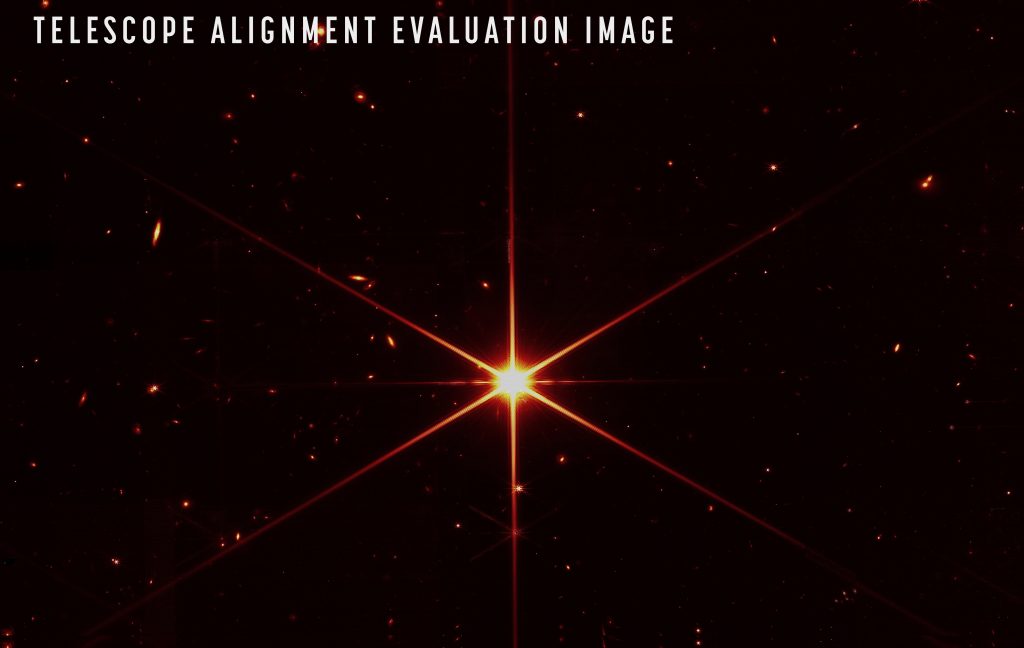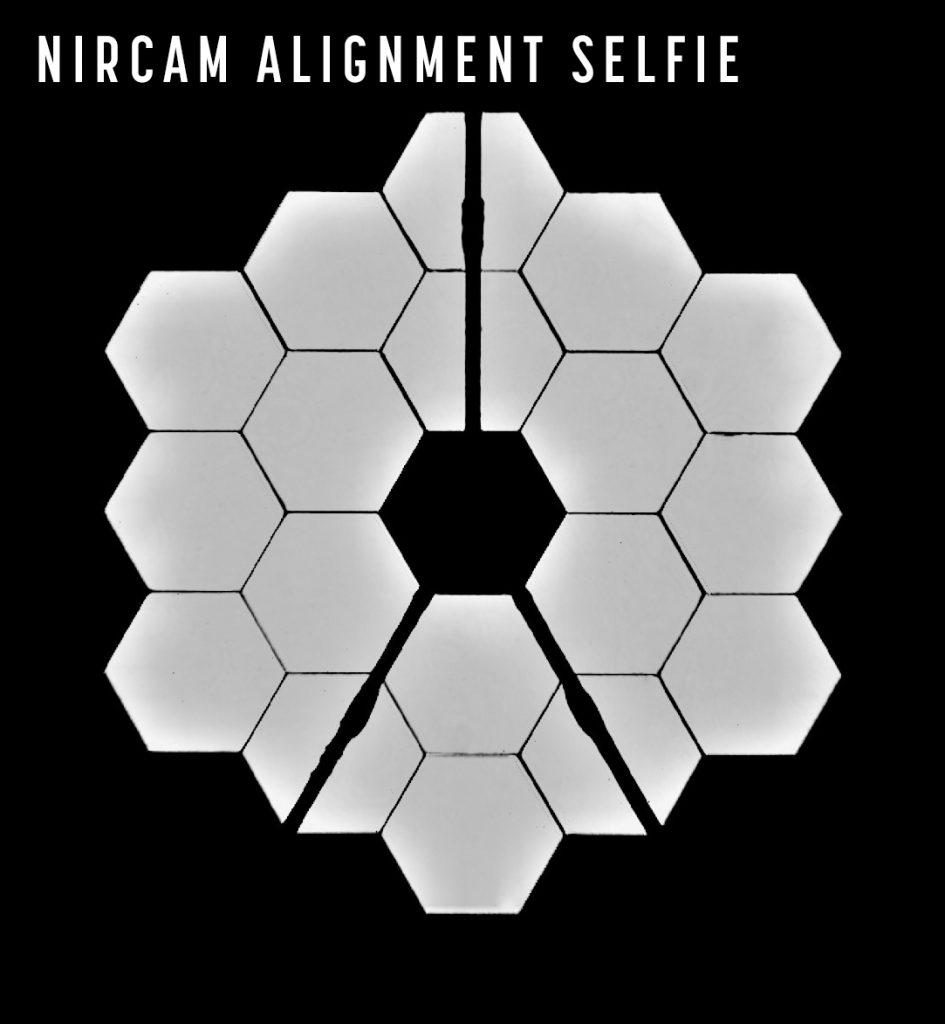Yesterday, Webb optical telescope element manager Lee Feinberg said “We made the right telescope” while reporting that its focus has reached the \theta \sim \lambda/D diffraction limit of 0.7 arcseconds at the infrared wavelength of 2 microns. (For comparison, from Earth, Luna subtends 31 arcminutes, which is about 1/2°.) Unlike the Hubble space telescope, whose primary mirror was very finely polished to the wrong curvature — but later corrected by additional optics — the Webb telescope optics will meet or exceed its design goals without any corrections. The only way to increase Webb’s resolution would be to increase its size.
The test image below shows a long exposure of a faint star. The radial lines are diffraction spikes. Confine light in one direction and it spreads in the perpendicular direction. Here, the six large spikes are from Webb’s 18 hexagonal mirror-segment edges and the one horizontal spike is from the vertical strut supporting the secondary mirror, which is visible in the Webb selfie. (The remaining two secondary mirror struts are parallel to mirror edges and their diffraction patterns combine with the mirror edge patterns.)
Due to Webb’s unprecedented resolution and sensitivity, many galaxies are also visible in this alignment image, whetting the appetite of Earth-bound astronomers!

Webb image of a faint test star, diffraction spikes perpendicular to mirror segment edges and support struts, pixel bleed due to the long exposure, and background galaxies. (NASA)

Webb selfie shows hexagonal mirror segments and three struts supporting the secondary mirror. (NASA)

Thanks, Mark! I enjoy reading your posts as well.